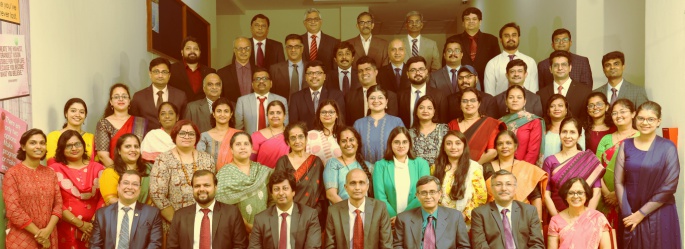Turbulent times: EASENext may not be easy for public sector banks
Publication: Deccan Herald
Author: Prof. Meera Aranha & Srinivasa Reddy
EASE 5.0 (Enhanced Access and Service Excellence) has undergone four annual revisions between FY18 and FY22. Each had a common theme: “Transform public sector banks (PSBs) with tech-enabled, simplified and collaborative banking”.
PSBs were urged to grow their customer base and credit off-take via analytics- and technology-driven credit offers. PSB Manthan, 2022, with PSB functional heads, set the stage for EASENext, which consists of EASE 5.0 and a bank-specific three-year strategy.
Under EASE 5.0, PSBs would continue to reform in order to meet customer expectations in a changing competitive and technological context while adopting a bank-specific three-year strategic roadmap. This article addresses the underlying problems facing public sector bank balance sheets and the broader economic challenges banks would face while designing their three-year strategy.
On the external front, the war in Ukraine and the Covid-19 epidemic are dictating the inflation rate and oil prices. Since the pandemic began, supply chain problems in China have affected the retail and chemicals industries. War and widespread futures market speculation have caused a cascade of price hikes and “shrinkflation” (pack size decrease) in the food processing and FMCG industries.
In the US, massive employee withdrawal from the employment market has led to historically high wage inflation. In recent months, venture capital financing has fallen as investors flee riskier equities for high-yield bonds.
How can Indian banks, particularly PSBs, increase their efforts to expand the economy in this broader environment?
Consider the large corporations. Low-interest rates in recent years have led to balance sheet debt growth. The five largest companies owe an estimated Rs 12-lakh crores. Despite smart corporate strategy, decreased consumer demand due to rising food inflation has influenced discretionary expenditures such as automobiles and motorcycles. How can public banks help these companies?
Rapid and broad expansion of retail loans including personal, home and auto loans would boost demand for these companies’ products. Banks could also infuse working capital. Higher inflation indeed raises the demand for working capital, but any increase in working capital must be compensated by higher revenue, i.e., banks must evaluate the inflation-resistant quality of the business before expanding working capital financing.
In the startup ecosystem in India, which has produced multiple unicorns, several online-only enterprises laid-off employees and altered their business plans before their next ‘financing round’. VCs have dried up.
Many of these startups have innovative, tech-driven business ideas, but require capital. Despite strong gross revenues, most start-ups have low working capital and operate at a loss. Several of these start-ups may merge in the next one to two years or choose to close if they cannot win over investors.
PSBs can wager on select startups. New ‘venture debt’ lending businesses are establishing themselves, and PSBs could utilise them for onward lending. Banks must also approach the infrastructure sector differently. During the pandemic, federal and state governments were tax-strapped and infrastructure projects were delayed. Good GST collections may incentivise these administrations to launch large-scale infrastructure projects. The key to profitable book growth in this infrastructure lending is strict underwriting standards and robust collection control.
Historically, PSBs have prioritised projects with government involvement. However, post the ILFS experience, PSBs would do well to avoid any lending that creates asset-liability mismatches on their balance sheets and allow the Development Finance Institutions (DFI) to take the lead. Banks could use a back door entry for such lending through these DFIs but must proactively assess the underwriting standards of the DFI before onward lending through them.
In the rural sector, which has long been a concern for banks, household incomes have declined, reducing demand for ‘indicator’ FMCG products like edible oil and glucose biscuits. However, it is a fact that India is increasingly viewed as the world’s breadbasket, as Ukrainian and Russian grain supply is hit.
To take advantage of this opportunity, Indian farmers may adjust their cropping practices, and a more significant portion of the nation’s farmers would shift to cultivating expensive-to-import oilseeds or wheat. The income of these new farmers would undoubtedly benefit from aggressive bank financing.
Consequently, PSBs would be better positioned to conduct a global risk assessment of the most important economic indicators while designing a local strategy.
As PSBs struggle to develop business viability commensurate with their balance sheet size while also facing human resource and IT integration challenges, relying on a quick business expansion strategy is a sure way to increase non-performing assets.
Hence, expecting “too much” in three years would mean saddling these banks with bad debts — the exact same reason why these banks were recently forced into shotgun weddings.




